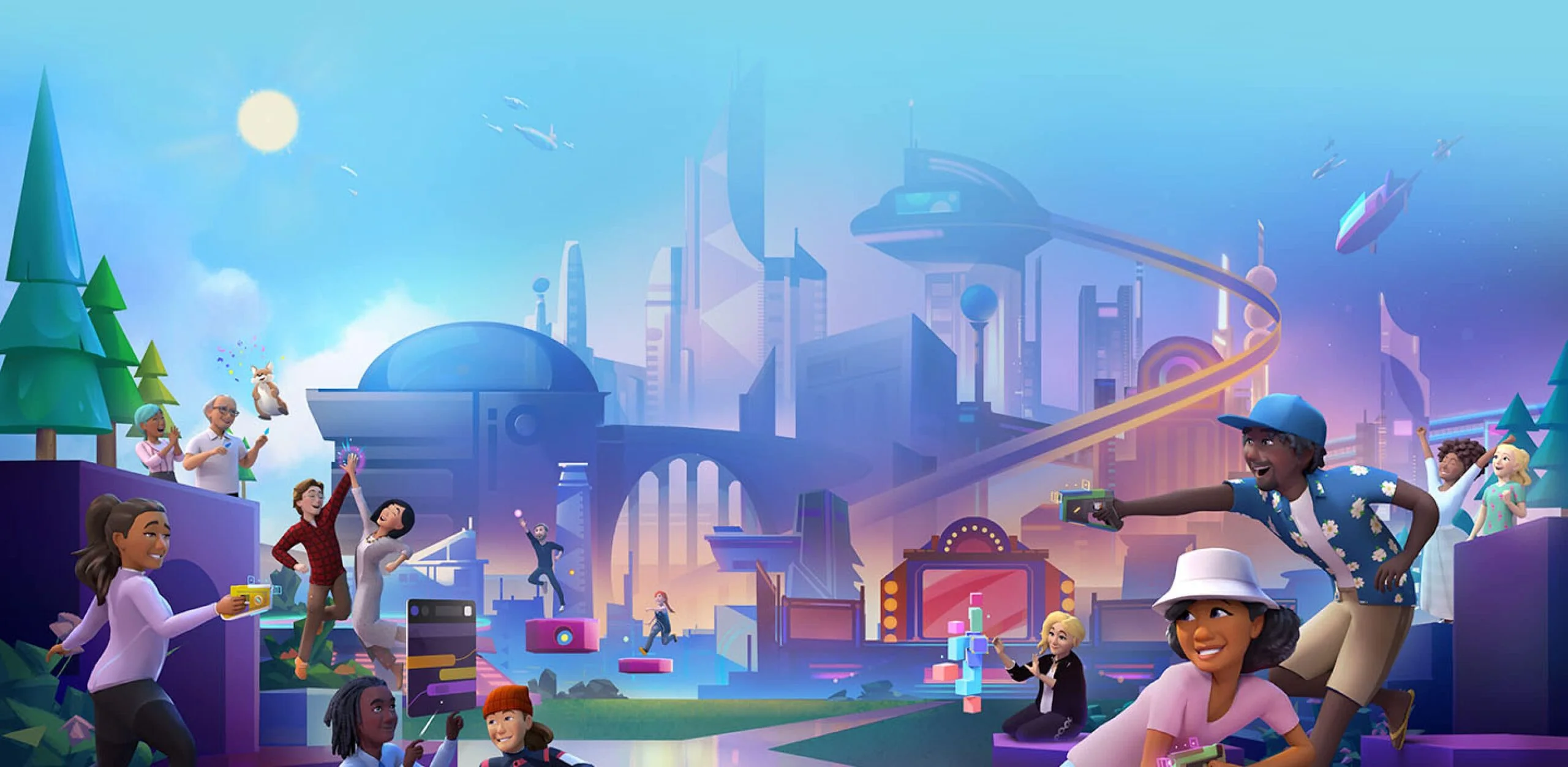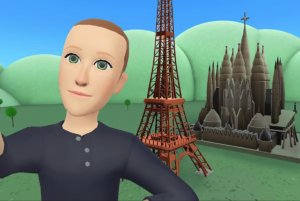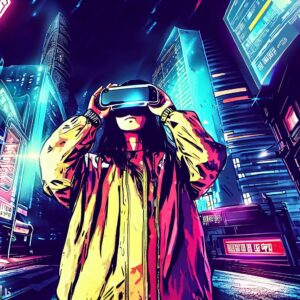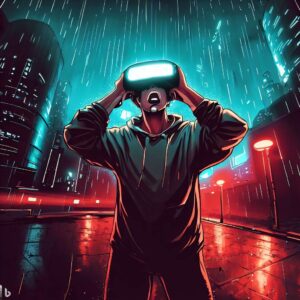The Metaverse is a large, shared digital space connecting various virtual worlds, while Virtual Reality (VR) focuses on creating individual, immersive experiences within those worlds. The difference lies in the Metaverse’s broader scope and VR’s specific, immersive environments.
Hey there, friend! As a tech enthusiast, I’ve come across numerous discussions and debates on the internet, where people seem to be getting tangled in the web of confusion that is Metaverse and Virtual Reality. So, in the spirit of sharing knowledge, I’ve decided to take you on a journey through the captivating world of Metaverse and Virtual Reality, side by side, in this blog post.
As you dive into this fascinating topic with me, you’ll get a crystal-clear understanding of how these two technologies differ and how they’re shaping the way we live, work, and play. I promise to keep the jargon to a minimum and share stories from my own experiences in these virtual landscapes.
What is Virtual Reality (VR)?
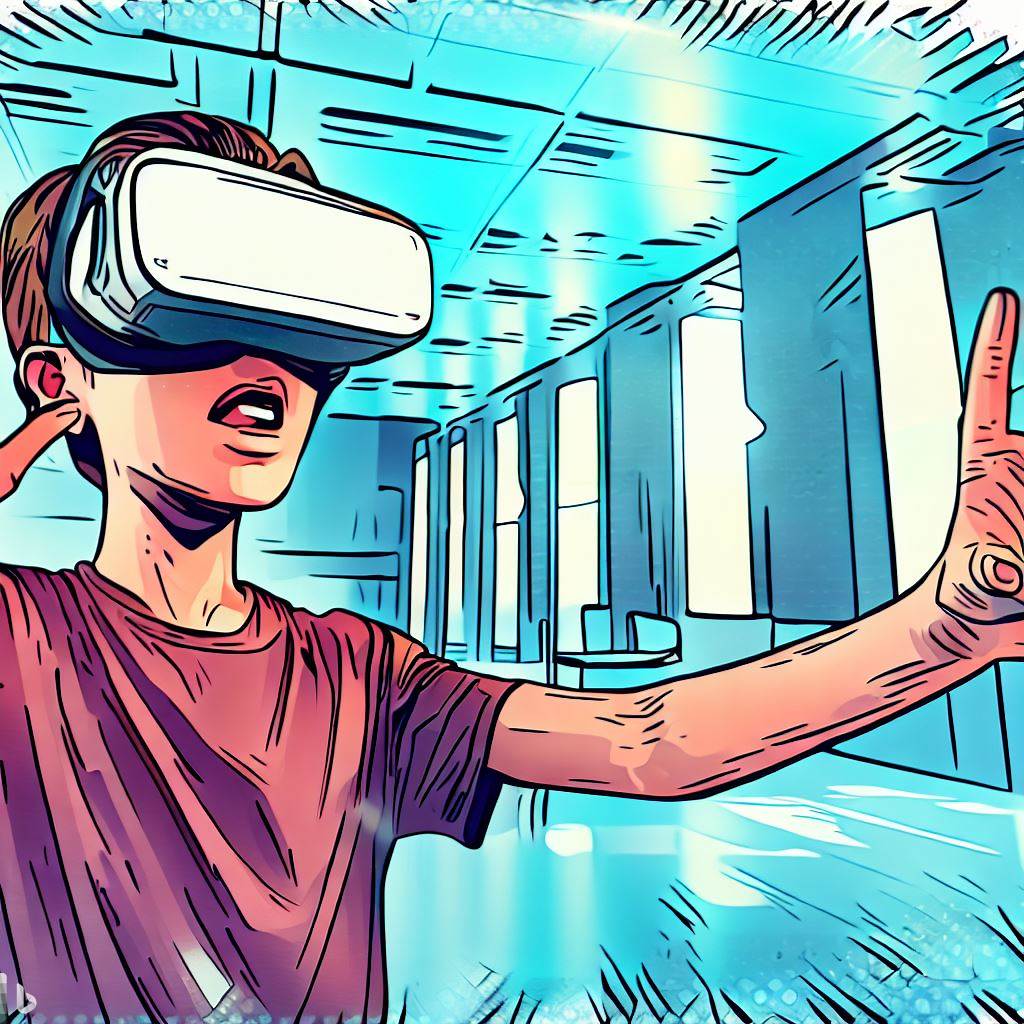
Before we dive headfirst into the world of Metaverse vs Virtual Reality, let’s take a moment to understand Virtual Reality (VR), shall we? You’ve probably heard of it or even experienced it firsthand, but do you know what it really is?
Simply put, Virtual Reality is a computer-generated simulation that immerses users in a three-dimensional environment, making them feel as though they’re in a completely different world. It’s like taking a vacation without ever leaving your living room! 🏝️
Now, you might be wondering, how does VR work? The magic lies in a combination of cutting-edge hardware and software. Here’s a quick breakdown of the essential components:
- Head-mounted display (HMD): This nifty device, which you wear on your head like a pair of goggles, provides the visual aspect of VR. It tracks your head movements and adjusts the view accordingly, creating the illusion of being inside the virtual world.
- Motion tracking: To make your VR experience even more immersive, motion tracking systems, such as gloves or handheld controllers, detect your body’s movements and translate them into actions within the virtual environment.
- Audio: High-quality, spatial audio is crucial for a fully immersive experience, as it adds depth and realism to the virtual world, making you feel like you’re truly there.
Now that we’ve got the basics down, let’s take a trip down memory lane to see how VR has evolved over the years. Here’s a brief timeline of VR milestones:
- 1962: Morton Heilig invents the Sensorama, an early attempt at creating a multisensory virtual reality experience.
- 1987: Jaron Lanier coins the term “Virtual Reality” and founds VPL Research, a company focused on developing VR products.
- 1990s: VR enters the gaming industry with devices like Sega VR and Nintendo’s Virtual Boy.
- 2010s: Modern VR gains momentum with the launch of the Oculus Rift, HTC Vive, and PlayStation VR, bringing high-quality VR experiences to the masses.
Fun fact: Did you know that the idea of virtual reality dates back to the 1930s when science fiction writer Stanley G. Weinbaum first described a pair of goggles that could transport the wearer into a virtual world? Talk about being ahead of his time!
If you’re interested in a more in-depth look into the history of VR, I invite you to check out my other article: “When Was VR Invented? The History of Virtual Reality!” It’s a must-read for anyone passionate about the evolution of this amazing technology.
Now that we’ve unraveled the mystery of Virtual Reality, it’s time to explore the enigmatic realm of the Metaverse. So, buckle up, and let’s dive into the next section! 🌐
What is the Metaverse?
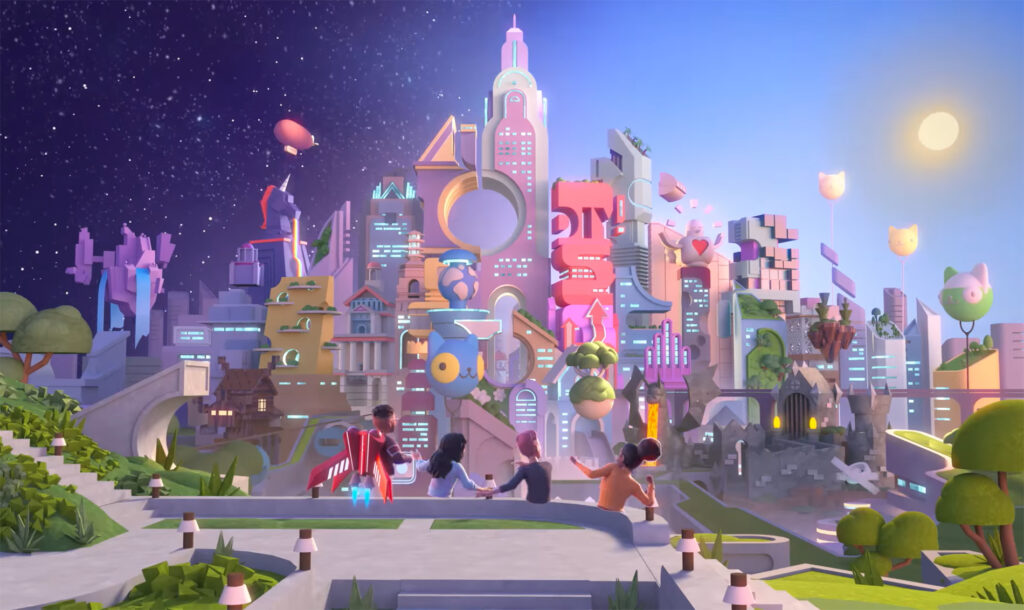
Now that we’ve got a firm grasp on Virtual Reality, it’s time to venture into the mysterious and intriguing world of the Metaverse. So, what exactly is this elusive concept that has been making waves in the tech world?
The term “Metaverse” was first coined by author Neal Stephenson in his 1992 sci-fi novel, Snow Crash. In the book, the Metaverse is a virtual universe that exists parallel to the physical world, where users interact with each other through avatars. Fast forward to today, and the idea of the Metaverse has evolved into a vision of a shared, interconnected digital space that blurs the boundaries between virtual and physical reality.
At its core, the Metaverse is a fusion of multiple elements, including:
- Virtual reality and augmented reality: The Metaverse is powered by immersive technologies that allow users to experience and interact with the digital world as if it were real.
- Social interaction: The Metaverse enables users to connect with others, form communities, and engage in shared experiences, such as attending concerts, playing games, or collaborating on projects.
- Economy: A thriving virtual economy exists within the Metaverse, where users can buy, sell, and trade digital assets, such as virtual real estate, clothing for avatars, or even digital art.
Imagine a vast, interconnected universe where you can seamlessly hop from one virtual world to another, engage with people from all around the globe, and even earn a living through virtual businesses – that’s the Metaverse in a nutshell!
Notable examples of Metaverse-like platforms include:
- Second Life: Launched in 2003, this virtual world allows users to create and customize their own avatars, interact with others, and participate in various activities.
- Roblox: A popular gaming platform where users can create and share their own games, as well as play games designed by others, all within a shared digital space.
- Decentraland: A decentralized, blockchain-based virtual world where users can buy, develop, and sell virtual land, as well as create and monetize content.
With a clearer understanding of the Metaverse, you may already be spotting some differences between it and Virtual Reality. But don’t worry; we’ll dive deeper into those distinctions in the next section. So, keep reading, and let’s continue our exploration together! 🚀
The Differences Between the Metaverse and VR
As we journey through the realms of the Metaverse and Virtual Reality, it’s essential to understand the key differences between these two fascinating concepts. Although they share some similarities, such as utilizing immersive technologies to create engaging digital experiences, they are not the same. Let’s dive into the main distinctions that set them apart:
A. Scope and Scale
- Virtual Reality: VR is primarily focused on individual experiences within a single virtual environment. Users engage with the virtual world through a VR headset, experiencing simulated environments, games, or educational content.
- Metaverse: The Metaverse is a collective, interconnected digital universe that encompasses a multitude of virtual environments, platforms, and experiences. It’s a grander concept that transcends individual VR applications and integrates various immersive technologies, including augmented reality (AR) and mixed reality (MR).
B. Interactivity and Social Connection
- Virtual Reality: While VR does offer some social interaction features, it tends to be more isolated and limited in terms of user engagement. Users generally interact with the immediate environment or engage with a small group of users within a specific application.
- Metaverse: Social interaction lies at the very heart of the Metaverse. It’s all about connecting people in a shared digital space, where they can form communities, collaborate, and participate in group activities, transcending geographical boundaries.
C. Economic Impact
- Virtual Reality: VR is primarily an entertainment and educational tool with limited economic implications. Users might make in-app purchases within specific applications, but the overall economic impact is minimal.
- Metaverse: The Metaverse is home to a vibrant virtual economy where users can buy, sell, and trade digital assets, such as virtual real estate, clothing, and art. Many users even make a living within the Metaverse, creating content or offering services to others.
D. Development and Ownership
- Virtual Reality: VR applications are typically developed and owned by a single company or organization. They control the content, features, and user experience within the virtual environment.
- Metaverse: The Metaverse is a more open and collaborative ecosystem, where users, developers, and organizations contribute to the creation and evolution of the digital universe. It embraces decentralized technologies like blockchain, ensuring that control and ownership of digital assets remain with the users.
In summary, while Virtual Reality provides immersive, individual experiences within specific virtual environments, the Metaverse is a vast, interconnected digital universe that fosters social connections, collaboration, and economic opportunities.
Now that we’ve shed light on the differences between the Metaverse and VR, let’s move on to real-life examples of both concepts in action and explore the exciting possibilities they offer! 🌟
Real-Life Examples of Metaverse and VR Concepts in Action
To truly appreciate the potential of both the Metaverse and Virtual Reality, let’s explore some real-life examples of how these technologies are being implemented and the impact they’re having on our lives.
Metaverse Examples
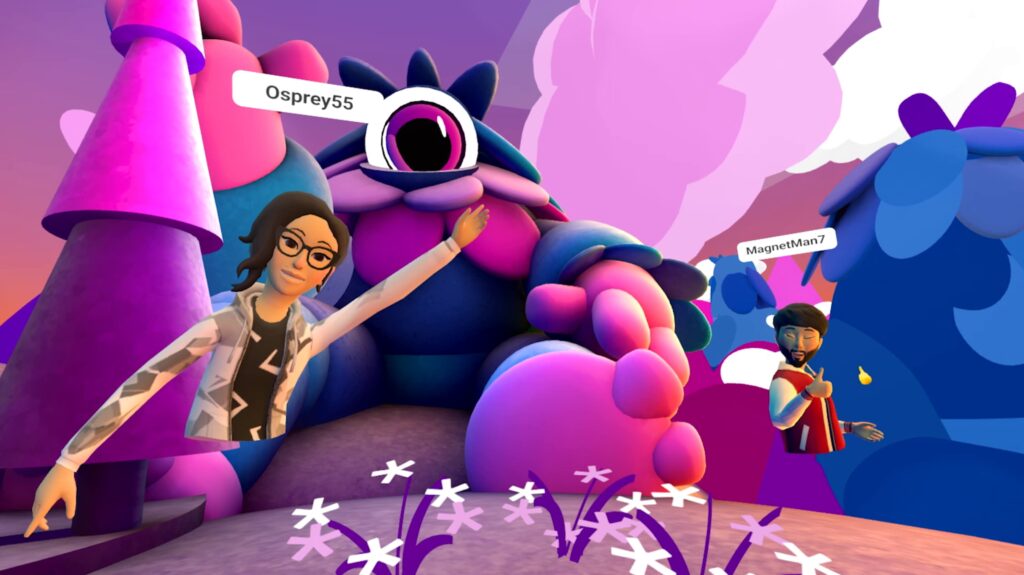
- Fortnite: Epic Games’ popular battle royale game has expanded beyond its initial gameplay concept to incorporate elements of the Metaverse. Fortnite now hosts virtual concerts, movie screenings, and other live events within its digital environment, drawing millions of players from around the world to share these unique experiences.
- Cryptovoxels: This blockchain-based virtual world allows users to buy, build, and monetize virtual land. Artists and creators can showcase their digital artwork in virtual galleries, while users can attend virtual events or engage with other community members.
- Horizon Workrooms: Developed by Meta (formerly Facebook), this virtual reality meeting platform aims to revolutionize remote work by providing an immersive, collaborative environment where teams can connect, brainstorm, and work together as if they were in the same physical space.
Virtual Reality Examples
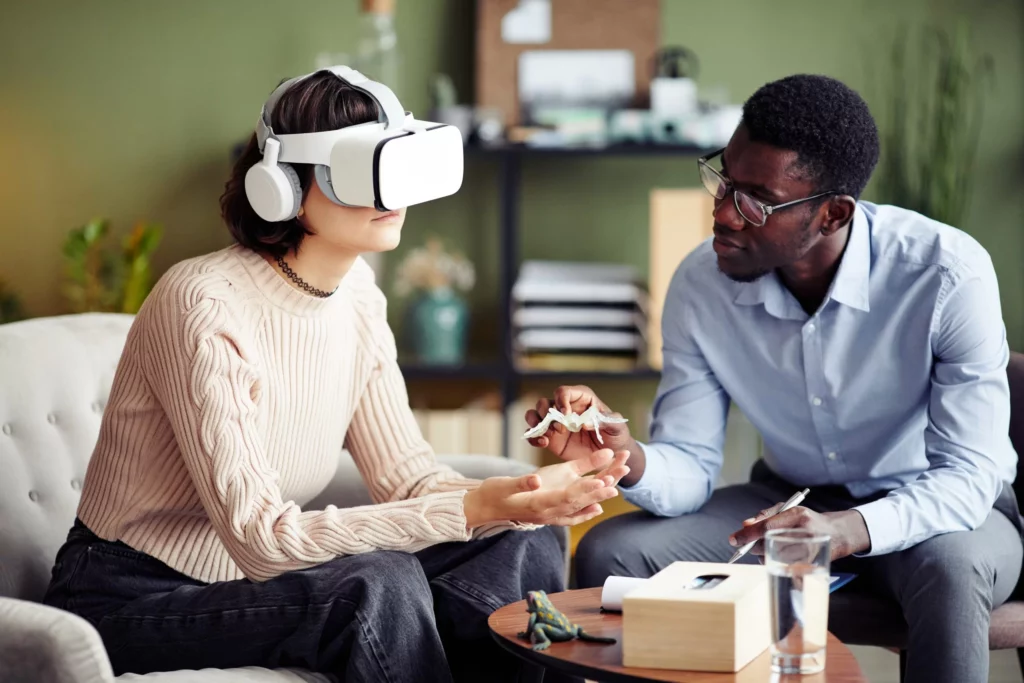
- Medical Training: VR is being used to train medical professionals in various fields, such as surgery, emergency response, and patient care. By simulating real-life scenarios, VR helps practitioners develop their skills in a risk-free environment.
- Mental Health Therapy: VR is increasingly being utilized for mental health therapy, particularly for the treatment of phobias and post-traumatic stress disorder (PTSD). Through controlled exposure to fear-inducing stimuli, patients can gradually overcome their anxieties in a safe and controlled setting.
- Virtual Tourism: Travel enthusiasts can now embark on virtual tours of famous landmarks, museums, and other attractions from the comfort of their homes. These immersive experiences provide a unique way to explore and learn about different cultures and locations without physically traveling.
These examples highlight the diverse applications and potential of both the Metaverse and Virtual Reality. As these technologies continue to evolve, they will undoubtedly have a profound impact on various aspects of our lives, from work and education to entertainment and social interactions.
Now, let’s take a peek into the future and explore how the Metaverse and VR might continue to shape our world in the years to come. 🚀
The Future of Metaverse and VR: What to Expect
As we gaze into the crystal ball, the potential of both the Metaverse and Virtual Reality seems limitless. The fusion of cutting-edge technologies, rapid advancements in hardware, and growing interest from major tech players are all set to propel these concepts to new heights. Let’s explore some of the trends and developments we can expect in the future.
Enhanced Immersion
As hardware and software technologies continue to evolve, we can anticipate even more immersive experiences in both the Metaverse and VR. Some advancements include:
- Haptic feedback
- Eye-tracking
- Brain-computer interfaces
These technologies could make interactions within virtual environments feel even more realistic and intuitive.
Integration with Everyday Life
The Metaverse and VR are poised to become more deeply integrated into our daily lives, from work and education to shopping and entertainment. We may see the rise of:
- Virtual offices
- Virtual schools
- Virtual retail spaces
These developments would seamlessly blend digital and physical experiences, making our interactions with technology more natural and immersive.
New Economic Opportunities
The virtual economy within the Metaverse is set to grow exponentially, creating new opportunities for individuals and businesses alike. Some possibilities for entrepreneurship and innovation are:
- Digital fashion
- Virtual real estate
- Content creation
- Virtual experiences
Decentralization and User Empowerment
As the Metaverse continues to expand, decentralized technologies like blockchain will play a critical role in ensuring that power and control remain in the hands of users. This shift towards decentralization will promote:
- Greater transparency
- User empowerment
- Collaboration in the development and evolution of the digital universe
Social Impact and Ethical Considerations
As the Metaverse and VR become more pervasive, addressing social and ethical concerns will become increasingly important. Some key issues to consider are:
- Data privacy
- Digital addiction
- Equitable distribution of opportunities and resources within the virtual world
In conclusion, the future of the Metaverse and Virtual Reality looks incredibly promising. As these concepts continue to shape our world, we will witness the emergence of new and exciting possibilities that were once the stuff of science fiction. Embracing these technologies and their potential to transform our lives will be key to unlocking a brighter, more connected future for all.
Thank you for reading!

